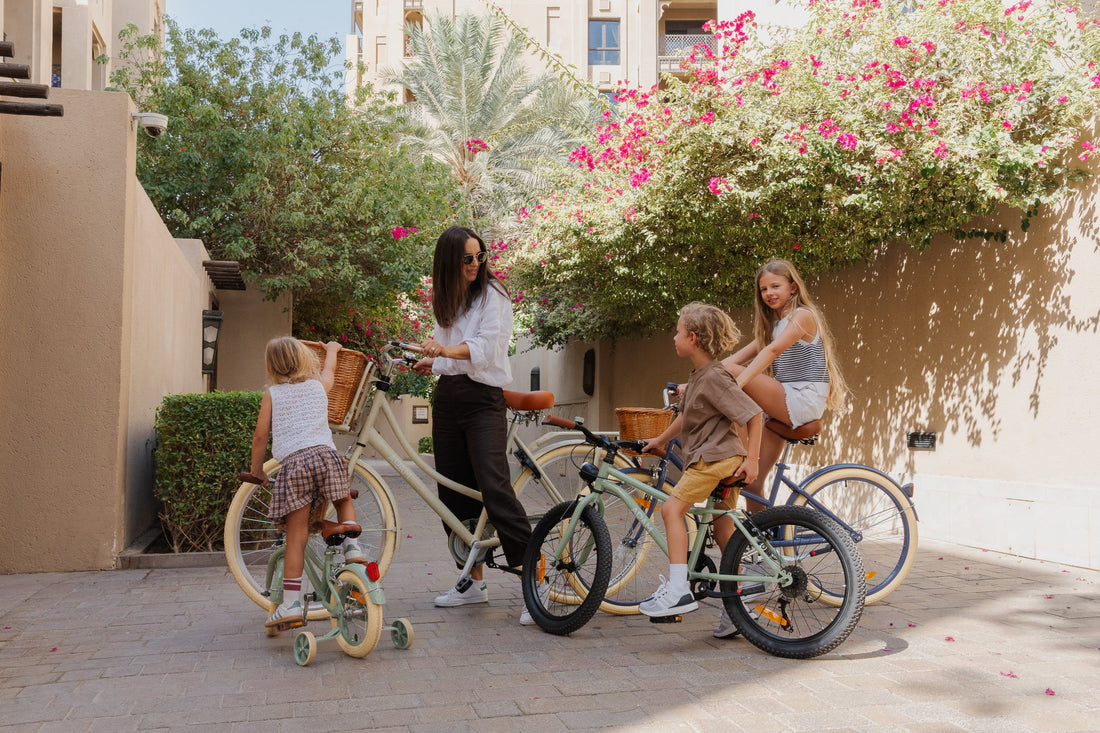
The Ultimate Guide to Mounting a Bicycle on Your Car
Share
If you're an avid cyclist, you know the joy of hitting the open road is unparalleled. But how do you bring your bicycle along when you need to travel by car? Knowing how to mount a bicycle on your car is essential for combining these two modes of transportation smoothly. In this guide, we'll delve into everything you need to know about bike racks, how to install them, and what options are best for you.
In Dubai, where driving is often necessary, understanding how to transport your bicycle effortlessly helps remove the barrier to enjoying cycling in the city. Whether you're heading to your favorite cycling track or planning a weekend family ride, having the right bike rack makes it easy to bring your bike along.
What Are the Best Bike Racks for Cars?
Choosing the right bike rack is crucial to transporting your bike safely. At The Adam Store, we understand how important it is to protect your bicycle while making transport convenient. Here's a breakdown of the most popular bike rack options:
● Hitch-mounted bike racks: Perfect if your vehicle has a hitch receiver. They’re easy to install and can carry multiple bikes.
● Trunk-mounted bike racks: Affordable and versatile, attach easily to the rear of your car with straps and hooks.
● Roof-mounted bike racks: Ideal for saving cargo space, though they may reduce clearance height.
● Spare tire bike racks: Specifically designed for SUVs with rear-mounted spare tires.
● Truck bed bike racks: Great for pickup truck owners.
● Platform hitch racks: Offer extra stability by providing a platform for bike wheels.
● Folding bike racks: Convenient for storage when not in use.
To complement your setup, don’t forget to explore our selection of bicycle accessories for added safety and convenience.
How to Install a Bike Rack on a Car?
Installing a bike rack might seem daunting at first, but most modern racks are designed for ease of use. Whether you're mounting a trunk, hitch, or roof rack, always follow the manufacturer’s instructions. Here's a general step-by-step:
- Position the rack securely onto your car. Hitch racks go into the hitch receiver, while trunk racks use adjustable straps.
- Tighten all straps or bolts to ensure stability.
- Load your bike onto the rack, balancing its weight.
- Secure the bike with straps or locks to prevent shifting.
For a smooth cycling experience, check out our collection of bike for adults, perfect for your next road trip.
If you're traveling with family, make sure to adjust your rack to accommodate smaller bikes, such as a small bike for kids.
Can Any Car Fit a Bike Rack?
Not every bike rack is suitable for every car. It's essential to choose one based on your vehicle type—whether it's a sedan, hatchback, SUV, or truck. Measure key areas like trunk width or hitch size to ensure compatibility.
Some racks offer adjustability to fit multiple car models, but always double-check specifications. Just as finding the right rack is essential, so is selecting the perfect bicycle. Refer to our guide on how to choose a bicycle to find a model tailored to your riding style.
What Is the Weight Limit for Bike Racks?
Understanding your bike rack's weight capacity is crucial. Most standard racks support between 16 to 27 kg per bike. If you’re transporting a heavier model like The Deluxe Adam 28" or The Electric Adam 28" - Electric Bicycle (our heaviest option), verify that your rack can handle the load.
Overloading your rack can lead to damage or accidents, so always check the manufacturer's guidelines. For multiple bikes, consider the overall combined weight limit as well.
How to Load a Bike Onto a Rack?
Once your rack is securely mounted, loading your bike is simple:
- Lift the bike onto the rack arms or platform. Hanging racks support the frame, while platform racks hold the wheels.
- Ensure balance to avoid shifting.
- Fasten straps and locks around the frame and wheels to secure the bike.
- Double-check stability before driving.
If transporting a smaller model like The Little Adam 12", ensure the rack accommodates its size.
Frequently Asked Questions
1. Can I leave a bike rack on my car permanently?
While most racks are durable enough for long-term use, it's recommended to remove the rack when not in use to prevent wear, improve fuel efficiency, and avoid theft.
2. Do bike racks scratch your car?
If installed correctly and with protective padding, bike racks shouldn't scratch your vehicle. Always check for dirt and debris under the rack's contact points before installation.
3. Can you open your trunk with a bike rack on?
Some racks, like swing-away hitch racks, allow access to the trunk without removing the rack. Trunk-mounted racks typically block access, so check the rack type before purchasing.
4. Are bike racks safe at high speeds?
Yes, when installed and secured properly, bike racks are safe even at highway speeds. Always double-check all straps, bolts, and locks before driving.
5. Do bike racks affect fuel economy?
Yes, roof and rear-mounted bike racks can slightly reduce fuel efficiency due to added drag and weight. Removing the rack when not needed can help save fuel.
